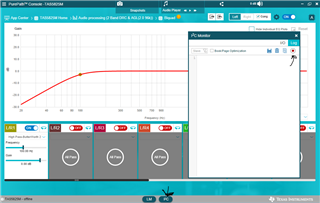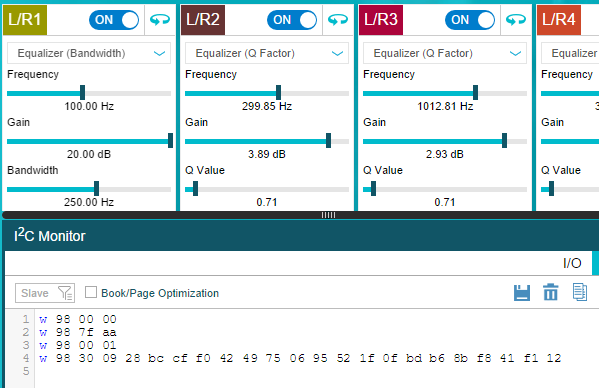Tool/software:
Hello
I am creating EQ bands on LCD screens and based on slider values I am setting EQ of TAS5825M. I have total 7 EQ sliders on GUI Screen( 3 Bass, 1 Mid, 3 Treble). We are using TAS5825M for our custom hardware design.Could you please explain and give some reference code so based on the slider value we can calculate the coeffiecient and write the TAS register. Also I am not sure which register should I write and how to calculate the values.




